-
Posts
357 -
Joined
-
Last visited
-
Days Won
2
Content Type
Profiles
Forums
Resource Library
Events
Gallery
Blogs
Store
Community Map
Posts posted by 2996 Victor
-
-
I've got my books - yay! - and scanning through Ernie Shepherd's Illustrated History, on page 99 are a couple of rather interesting loco coal wagons, in particular No.1229 with it's cupboard doors withd the circle marking on them. What's the meaning of the circle? And I thought I'd read somewhere that loco coal wagons were black, while this one looks distinctly grey - any thoughts? Could be that this will be my first essay in 5'3" wagonry.....
With kind regards,
Mark
-
 1
1
-
-
2 hours ago, jhb171achill said:
Years ago, I saw a picture of a model someone had made (or repainted!) of a (British) LNER J72 which he had tweaked a bit - I can't remember how, but it involved filing a few bits and gluing on some small bits - not a huge conversion job. Now, it was most certainly not an exact model of a Midland "E" class, but painted grey and with a big number "555" on the side, it looked convincing enough to pass at least the "three foot" rule...
The British equivalent of the K class (the Southern Railway's N class) 2.6.0s can be adapted as Irish, if you can't get an actual Bachmann K class. Mind you, all of these entered traffic just after the MGWR had become but one part of the GSR, so reference to them as "Midland" engines is stretching things a bit, as in addition to this many spent most of their working lives nowhere near the Midland - used on Waterford - Limerick, Waterford - Cork and Dublin - Cork. Naturally they were also regulars on the Galway and Sligo lines too. So a GSR-era layout will have those.
While I have not researched it, there may be some Bachmann or Hornby 4.4.0 which might warrant conversion to half-reasonable approximation to an "A" class 4.4.0, and a J18 goods / mixed traffic 0.6.0 could be made up by altering some "bought" 0.6.0. JM Design (John Mayne, here) is offering an extremely nice brass kit of the G2 2.4.0.
A model of a D16 4.4.0 would have me running to sell the car!
There's a model available of several South Eastern & Chatham bogies which if you shorten them a bit bear a vague resemblance to some MGWR bogies of 1900-05 type of design.
The six-wheel carriages, though, are the killer. A MGWR layout based on anything pre-1960 will need them in some shape or form. I asked questions here the other night about the Shapeways 3D prints, and replies from those who know about such thing were far from complimentary about them. Plasticard, in reality, seems the best option here. Drawings are readily available.
Hi Jonathan,
many thanks for the info - the LNER J72 conversion sounds like a reasonable first step, although whether it would be accurate enough to be acceptable in the long term would remain to be seen. I think a comparison of drawings might be in order! The K Class sound a bit too late for my period, which is a shame as anything that eases the path has got to be a good thing, hasn't it? Having had a skim through Ernie Shepherd's book, some of the 4-4-0s seem to bear a family resemblance to Furness Railway and Cambrian Railways locos of the same configuration, so perhaps there is scope there for investigation. John Mayne's kits look absolutely superb, and my concern from a personal perspective is that I'm not able to do them justice - I might have to sell a kidney and get them built by someone who knows what they're doing!
Incidentally, although this is definitely a case of "getting ahead of myself", and given that I'm planning a branch line which would have largely been worked by members the E Class, and given that this would be stretching plausibility to breaking point and beyond, which class(es) of locos would have been turned out in the blue livery? I do realise that they were types that would not have ventured down branchlines, but it seems like too good an opportunity to miss, and it could be a running-in turn

I'm quite happy with the idea of scratchbuilding carriages, and from that point of view, a six-wheeler is less work than a bogie! I know of several folk over on RMWeb who design and print their own stuff, and some sell as well to help finance their own modelling. I wonder if it might be an option to approach them and see if they'd be prepared to take on a commission to make some really good carriages. What does everyone think?
With kind regards,
Mark
-
 1
1
-
-
My cup runneth over!
I've been incredibly fortunate to have had so many detailed and informative responses from so many knowledgeable folks! Thank you all once again, and please keep it coming - I'd like to think of this thread as a source of reference for anyone already modelling the MGWR or wanting to.
My books arrived today, The Midland Great Western Railway of Ireland by Ernie Shepherd, Rails to Achill by Jonathan Beaumont, The Baronial Lines of the MGWR by Padraic O'Cuimin and Modelling Irish Railways by Stephen Johnson and Alan O'Rourke. If there are any others that are a "must" for my bookshelf, please do let me know!
John @Mayner has also reminded me that there was a series of articles by David Malone in the short-lived RailModel Digest magazine edited by Iain Rice an d Mike Peascod, which contains much information of use to modellers, including photographs of his excellent Cliffoney layout, locomotives and rolling stock.
Now to get back to drafting out a track plan for a layout. And where can I get a Class E.....?

With kind regards,
Mark
-
 2
2
-
-
13 hours ago, Mayner said:
After the opening of the Sligo & Cavan lines the Midland tended to get local companies or the government to promote or build branch lines to be worked by the Midland. These worked branches were built to meet Midland construction and civil engineering standards although some of the Western Branches were technically Light Railways they were built to the main line standards of the 1890s. The Light Railway Western branches of the Midland, Achill, Ballinrobe, Clifden, Killala and Loughrea were substantially built with realatively easy grades, substantial brick or stone buildings, usually with a standard MGWR 2 road engine shed, water tower and coal store at terminals, these branches only became light in terms of axle load, when the main lines were re-laid with heavier rails and bridges upgraded to accommodate the heavier locos of the 20th Century.
The small E Class tanks appear to have been introduced in the 1890s as a standard locomotive to work the Western lines and short feeder branches, but tender locos like the D Class 2-4-0s, L,Lm,Ln 0-6-0s worked goods and passenger trains on branch lines often working cattle specials from the big fairs in the West through to the Dublin Yards.
There are photos and details of train consists on the Ballinrobe and Loughrea branches in the "Baronial Lines" E Class 0-6-0T were generally used on passenger and mixed trains from opening until replaced by tender locos from the late 1930s onwards, there is a photo of a D Class 2-4-0 at Ballinrobe shortly before the loco was withdrawn in 1922. The branch train was usually made up of 3 6 wheel coaches a 3rd, a Composite and Brake 3rd, 2nd Class accommodation was provided on the Midland until withdrawn in 1912. Apart from the Limited Mail Stock of 1901-2 the Midland only had a handful of bogie stock on the 1900-1906 era a quartet of tri-composite coaches with a center luggage compartment introduced in the late 1890s, possibly for through working of tourist traffic from the main line to the Clifden and Achill Branches. Someone once remarked that the Midland was a Patrician rather than a Proletarian Railway with a high proportion of 1st and 2nd class Bogie stock.
Train frequency seems to have been 3-4 trains daily including a mixed in each direction on most branch lines from opening until services were cut back during the Emergency, with 1-2 trains daily on surviving lines with passenger services until closure except for a brief revival in the 60s on the Loughrea Branch and the survival of the Ballina Branch as a feeder line with main line connections. The reduction in train services from 3-4 to 1-2 trains daily in CIE days may have driven the need to replace the E Class with more powerful tender locos as goods traffic appears to have held up although passenger traffic continued to decrease.
The L,Lm,Ln Standard Goods classes worked cattle specials from the opening of the lines, with the loco working through from the main line with the empties and working the laden train through to Liffey Junction or the North Wall Yards in Dublin for shipping, traffic from the large seasonal fair in the West could be heavy with stations like Loughrea, Ballinrobe dispatching 3-4 trains of 25-30 wagons during a large fair.
In pre-Amalgamation days goods traffic appears to have been carried mainly in the MGWR standard convertible wagons, open box wagons and timber on twin bolster wagons, hardwood timber for export to Great Britain from the large estates was am inportant traffic in the pre-WW1 era, the Midland used gravel ballast in low sided open wagons from local pits with a pit at Dunsandle on the Loughrea Branch before the introduction of hopper wagons in 1905 and a change to limestone ballast with the opening of Lecarrow Quarry on the Mayo Line.
Track was flatbottom approx 80lb yd, usually spiked down to sleepers on branch lines, with bolt fixing and sole plates at joints, half round sleepers were used on the Loughrea and Ballinrobe Branches when opened and both branches were re-laid with material cascaded from the main line during the 1920s. There may be a photo of this type of track in David Malone's Model Rail Digest article on modelling Irish broad gauge trackwork.
A branch line from Ballinasloe to Mount Bellew or Moylough built by an independent company and worked by the Midland appears to be reasonably plausible large villages in excellent cattle country though the WLWR or GSWR would probably object.
Hi John,
many thanks once again for your incredibly detailed post, I can't thank you and everyone else enough for all the help and assistance I've received for my little project!
I was actually looking at Mount Bellew and Moylough as possible branch line terminii, so it's great to know that I'm thinking along the right lines and the little research I did into farming seemed to indicate that it was good cattle country that could conceivably support livestock and fair specials. From what you've said, it would most probably have been built by an independent company but that the station buildings would have been to standard MGWR architectural designs, or does that apply only to the locomotive sheds and facilities? I received my copy of "Baronial Lines" earlier today - it must be a rarity, given the price of it, but it certainly seems to contain a good deal of information.
Thanks also for confirming the track construction. It's pretty much what I was thinking it would be, but its great to have it confirmed. David Malone's article in RailModel Digest No.2 on trackwork does indeed mention the half-round sleepers used on the Baronial branches, and details a way to effectively model it using bamboo skewers which I want to have a go at! There's a photo at the bottom of page 82 showing a 4-4-0 at Achill, circa 1910, with half-round sleepers in the foreground, and a model representation at the top of page 84.
Thanks again and kind regards,
Mark
-
It's all printed to order, at least it has been whenever I've ordered anything!
With best regards,
Mark
-
 1
1
-
-
10 minutes ago, Angus said:
A little while ago I was looking for inspiration as to what I might model to reflect my growing MGWR interest.
I spent some time in the "National inventory of Architectural Heritage" web site.
The link below takes you to the remains of the fortress coal stage and watertower at Sligo.
If you click view on a map it shows other structures of interest that remain which can be opened to reveal photos of their current state.
Alternatively in the map view you can select different map backgrounds including, for most locations, the historic 25" to the mile map which has some detail of the track formations.
You can search different areas in the mapping function you can then pan down into remaining buildings and track layouts.
I think I lost a weekend in that site but now have track plans for most of the MGWR terminal stations.
Hi Angus,
this is amazing, thank you for posting the link! There's a wealth of information to be found via that website - the availability of the 25inch maps is an incredible boon to modellers looking for track layouts. I can easily see how you could lose a significant amount of time looking at it, and I'm sure I will do the same!
Thanks again and very best regards,
Mark
-
 2
2
-
-
49 minutes ago, jhb171achill said:
OK, to show service levels on Midland branch lines, these are from the GSR 1926 Working Timetable. I’ve a couple of actual MGWR ones but they are not handy to access, and tell 99% the same story anyway.
These are typical not just of the Midland, but the great majority of the GSWR, DSER, CBSCR, GNR and NCC also, and the narrow gauge lines.
Trains marked “Mail” were mixed. They were only designated as such on branch lines because they connected with main line up and down, day and night mail trains at junctions.
Jonathan, these are amazing, thank you so much! They're an incredible source of information and an invaluable reference for running practices on a model.
With kind regards,
Mark
-
 1
1
-
-
One thing that I have noticed in a number of photographs I've seen, and is visible in the photograph of Athboy with the turntable in the foreground, is that the nearest section of the platform is higher than the rest. What is the reason for this? Presumably loading of some sort?
Many thanks for any enlightenment!
With kind regards,
Mark
-
41 minutes ago, Garfield said:
Edenderry had a two-road engine shed. It did have a turntable, however. In fact, due to limited space it was used in lieu of a set of points to allow the loco access to the loop from the platform road in order to run around its train...
Track plan here: https://bit.ly/2xVqei2Thanks for the link - its an interesting layout and the use of the turntable as a loco release is intriguing! And space-saving.....

Kind regards,
Mark
40 minutes ago, Galteemore said:Athboy had similar provision of locomotive facilities.
https://www.google.co.uk/amp/s/athboy100.com/2016/05/17/the-athboy-railway-station/amp/
Many thanks for the link, this another interesting layout, particularly the way the shed roads also fan off of the turntable.
With kind regards,
Mark
-
 1
1
-
-
23 minutes ago, jhb171achill said:
Yes, six-wheelers.
On most branchlines, not just Midland ones, you don't really see bogies appearing all that much if at all until the late 1920s / 1930s, when one bogie compo tends to replace a couple of six-wheelers; many branch trains then become one bogie with a six-wheeled brake third or the like.
Once bogie coaches started being built in the 1890s (there were but a handful before that), gradually the newer six-wheeled stock, including a few with an internal "corridor" between the few compartments, but no gangways, were "cascaded" onto secondary lines, and were more than adequate for that type of work. Thus, on a typical 10-15 mile branch, you were to see many six-wheelers lasting until the final pogrom of such branches in the late 50s and very early 60s. What was left of six-wheel stock was all concentrated in Cork, where they were used as spare excursion stock on the Youghal line until late spring 1963, after which the only six-wheelers in traffic were the handful of GSWR passenger vans I mentioned earlier.
How often would trains be mixed - an absolutely typical rural branch line service on most country lines from one end of Ireland to the other, and on both gauges, had one return passenger train per day and one mixed - all year round. On market days or summer season usually a second passenger service would run. Fair days, especially in the midlands and west, would often see an extra train plus a cattle special.
On main lines, mixed trains were less common, as goods levels warranted separate goods trains, but separate goods trains were only on some branch lines - which, as a result, would probably have the daily goods and 2-3 passenger trains, but not a mixed.
Mail was often carried on the mixed train too, as the delays at stations due to shunting trucks allowed mails to be loaded and offloaded too. For model railways set in the first twenty years of the century, mail carriage was universal, and you might have an RIC man (on a bicycle!) at the station to supervise the post office men loading and unloading mailbags in case they were "interrupted"!
So, for a model of a branch, you're looking at a set which prototypically will be three or four six-wheelers which shuttle up and won the branch two or three (maybe four) times a day, one of the return trips being the mixed. On fair days, for modelling interest, a cattle special or two - your branch terminus could be a bit like Loughrea with a huge cattle mart right next door. GAA specials, pilgrimage specials, and one not often considered by modellers - harvest emigration specials (common in the west of Ireland) could bring in a six-coach train of mixed bogies and six-wheelers.
Compared with Britain, where long-wheelbase four wheelers (like the Ratio plastic kit) were common on branch lines, Irish main line companies didn't really have four-wheelers much after 1880. The MGWR certainly had ONE as late as 1914, whose design incidentally was utterly unlike anything in Britain, but that seems a one-off. So, recourse to a 6-wheeled chassis is going to be obligatory. Even on the main lines, most trains had at least one or two well into the 1940s and earlier 50s.
Sorry for the long ramble.
Give me an idea of what area of the country you plan to model and I will post scans of the 1921 or 1926 timetables for that area.
Thank you as always for your reply: you are indeed the font of all knowledge and I for one would like to heartily thank you for sharing it!
Where to start? Well, for the location, I'm embarassed to say I don't really know, although I'm leaning toward the western half of the system with a branch of similar length to Loughrea or Ballinmore, possibly somewhere in the Athlone/Claremorris/Athenry triangle, where I think livestock may have been grazed?
So I think it's fair to assume (always a dangerous thing to do!) that a branch line such as I'm envisaging would have been limited to the one or two passenger and one mixed trains per day, but with with fair day and livestock specials. Thanks also for the information on the parcels/mails traffic, which probably wouldn't have occurred to me and which offer another cameo opportunity.
Coach building is also going to be a new departure for me, which I'm looking forward to! I have yet to investigate Worsley Works scratch-aid etchings - etched brass brings me out in a rash (shame about those 3D-prints - I may take the plunge and order one, although as I mentioned earlier on the other thread, I wasn't impressed with my previous purchases from the same supplier).
Thanks again for all your help and advice, its hugely appreciated!
With kind regards,
Mark
-
 1
1
-
-
6 minutes ago, Midland Man said:
There was a midland branch that had a double row engine shed (and no it is not Achill!) you could do a model of Killina but photos are rare but I could get you the track plan but it could take about About a day to find. Plus Killina has no turn table. Yay for some by no for others.
Hi @Midland Man,
thanks you very much for your kind offer, its hugely appreciated, so if it's not too much of a pain to find, I'd be very pleased to have a copy of the Killina track plan. I'm not worried about there not being a turntable - its only something else to go wrong or break

With kind regards,
Mark
-
 1
1
-
-
58 minutes ago, Galteemore said:
Books are always a wise investment - although frustrating to wait for at times. I’ve bought a fair amount of hard to find books from the US and it’s always nice when one lands in!
I’d go for FB rail - click below for a classic MGWR terminus. I’ll PM you a drawing.
Thank you for the link - that's a fabulous photograph! The track is almost exactly what I'd imagined - the uneven ballasting, worn sleepers and the accumulation of cinders in the platform road all speak volumes! I'm guessing that for my period, the sleepers would have been perhaps a little better, condition-wise, but otherwise much the same.
Thanks also for the drawing - that's the perfect vehicle for a starter project! The leading dimensions are a huge help: such a shame the Broadstone Series don't seem to have any scale on them, although the gauge is shown, of course.
With kindest regards,
Mark
-
 1
1
-
-
44 minutes ago, Galteemore said:
Thanks for the kind comments thus far. It’s been a steep learning curve! It has taken me many years to realise two things. First of all, I prefer building trains to running them. Secondly, although imperfect, I can actually produce some work which I can live with!
Nothing much to show off stage and it’s rather untidy right now for pics! Here’s a few old ones. All four tracks run out into a blank area where a crude cartridge system will operate. I toyed with building a bridge to disguise the exit but it just wouldn’t have fitted with the geography and would have looked silly. So a fisherman’s hut is a simple view block. Richard Chown (the man who brought 36.75 to public notice in the 70s) argued that gaps in a backscene were less noticeable if under the visual horizon. Hence my crude tribute to Knocknarea.....
Thanks for the extra photos, it really is a splendid layout and an inspiration! I have to agree about the "hole in the backscene" - using a bridge or tunnel can work in certain circumstances, but it has been used so often in places where it looks out of context. A view block consisting of a building or buildings, trees and hedges or suitable landscaping can be so much more convincing.
There was a short article in Model Railway Journal No.267 about effectively making the fiddle yard part of the scenic section, so that although there is a view block at the transition point, the fully ballasted track continues into the "off-stage" area and suggests quite effectively that the line really does go somewhere. It's certainly something I want to try out!
With kind regards,
Mark
-
 1
1
-
-
19 minutes ago, jhb171achill said:
Just thinking of your chosen era, Mark - for a branch line setting, if that's what you're going for, the Midland (similar to the GSWR) had an almost standard set-up for a passenger train, which was:
Full brake or brake third
First Class coach
2nd / 3rd composite
...with an extra all-third added as required
- or -
Full brake or brake third
1st / 2nd composite
One or two thirds.
Many thanks, Jonathan, for the extra info - presumably these would be six-wheelers rather than bogie vehicles? And how often would the trains be mixed?
Kind regards,
Mark
-
I did mean to ask about your treatment at t'other end, where the scenic section goes "off-stage". Any photos in that direction?
Kindest regards,
Mark
-
Well, I've been fairly busy!
I've subscribed to New Irish Lines, I've been in touch with Des Sullivan at SSM to order some W-iron and brake gear etches and a couple of his MGWR Convertible wagon kits, I've emailed North Yard Models in New Zealand regarding 28mm pinpoint axles for rolling stock and I've contacted Stephen Freeman of Borg Rail about constructing points and have received some extremely reasonable quotations. This latter approach means that I only have to worry about a track gauge for plain track and a back-to-back gauge for wheels, which are proving difficult to find. On a slightly less positive note, I also contacted Ultrascale about their 21mm gauge wagon wheels and axles, but they are unable to give any timescale for production which, added to their significant cost premium, makes them a bit of a no-no.
Unfortunately, none of my books has turned up yet, which is a bit of blow. So I was wondering if anyone could advise what form of track work the MGWR would have used on a branch line, i.e. chaired bull-head, spike flat-bottomed, etc, I'd be grateful as this will help me with the decision on model trackwork. It also means I'm stuck for starting any rolling stock construction, although John @Mayner has been incredibly kind in sending me electronic copies of drawings he has, I'm currently sans printer. So here's a very cheeky request: does anyone have a dimensioned drawing of, say, an open wagon that I could cut my teeth on?
My next task is to devise some sort of track layout for my project, which is more than likely to be a fictional location. I've not decided where its going to be set, which of course would affect the traffic a fictional line would have carried and hence the track layout, so again I'm a bit stuck until my books arrive. In any case, it will need to be quite small as mentioned somewhere above, probably 6' long as a maximum.
Thanks again to everyone who has offered help and kind words of advice, please do keep your thoughts and suggestions coming!
Stay safe and stay well,
Mark
-
I too have had a (very) few items from this manufacturer's Shapeways page, in my case some narrow gauge War Department Light Railway bogie open wagons.
They were in the same material mentioned above, and I was most disappointed with the finish and poor quality of the surface details. Not only that, but there were fundamental errors in the basic length and width of the vehicles.
Unfortunately, this supplier has a wide range of interesting vehicles, many of which I would be interested in. But they are all the same material, and once bitten, twice shy as they say!
I would prefer to pay more for better quality prints with better materials than pay less for a poor quality print that isn't worth its purchase price, but that's just my opinion, of course.
Best regards,
Mark
3 minutes ago, Noel said:If they were available in Shapeways FUD material (ie like Neil's 42ft container flats), I'd be tempted but WSF material not great for raised precision surface detail (toothpaste effect).
Agreed!
-
 2
2
-
-
11 minutes ago, Galteemore said:
Great, @Galteemore, much appreciated!
-
 2
2
-
-
12 hours ago, David Holman said:
my Fintonagh thread
Hi David,
Not sure why, but I can't seem to find this - is there a link?
Kind regards,
Mark
-
31 minutes ago, David Holman said:
More fantastic work! Brilliant!
-
 1
1
-
-
-
 1
1
-
-
19 hours ago, Angus said:
With the Horsebox finished I've been cracking on with the first of the meat vans.
Lessons from the horsebox build has meant the van is going quicker. Here staged beside the obligatory 5p piece.
I couldn't resist a shot with the horsebox.
I'm planning to finish the first of the meat vans in MGWR livery.
The only photo I've found of a van in this condition is the one in this link:
I would love to know what the writing on the bottom planks says. It is probably too small to reproduce in 2mm scale. I like to know all the same, any ideas out there?
Incredible work! My efforts at etched brass kits in 4mm scale have been ham-fisted disasters, so to see this kind of work in 2mm scale is mind-blowing!
Stay safe and stay well.
Best regards,
Mark
-
 1
1
-
-
Well, here are some of my recent efforts
 in most cases, I've used kit sides and ends with scratchbuilt underframes, sometimes with the kit's floor but more my own. Axleguards are MJT etches, fixed rigidly, with 3D-printed axlebox/spring assemblies. Solebar details are taken from the MJT fret. Brake gear is mostly fettled Slater's with Masokits etched brass safety loops replacing the moulded-on ones. Brake levers will be a mixture of Masokits and Bill Bedford etches.
in most cases, I've used kit sides and ends with scratchbuilt underframes, sometimes with the kit's floor but more my own. Axleguards are MJT etches, fixed rigidly, with 3D-printed axlebox/spring assemblies. Solebar details are taken from the MJT fret. Brake gear is mostly fettled Slater's with Masokits etched brass safety loops replacing the moulded-on ones. Brake levers will be a mixture of Masokits and Bill Bedford etches.
The first two are Slater's Midland Railway Diagram D299 5-plank opens, finished as examples built by the Somerset & Dorset Joint Railway's Highbridge Works. These differed in detail from the Midland design, most notably in that the floors didn't have drop doors, and the side doors had hefty wooden doorstops. Most also had a long brake lever, but these are numbered in the early series which had standard Midland short brake levers. They're going to be loaded, hence the lack of interior detail and only the top plank is tinted:
http://
These two are Cambrian Railways vehicles, finished in that company's pre-1899 livery, although there is some likelihood that they shouldn't have the load branding. The 4-plank on the right is based on sides/ends from the Cambrian Model Rail kit, with my usual scratchbuilt underframe. The 2-plank fixed side on the left is 3D-printed, and comes from Coastline Models Shapeways page:
http://
This is a Midland Railway Diagram D305 3-plank dropside, again using Slater's sides/ends. It needs its buffers as well as its brake lever:
http://
While this one is finished as a Midland Railway Engineer's Department vehicle, built "out-of-the-box" but with added canvas spats over the axleboxes:
http://
These two are also built from Slater's Midland D305 kits, finished as S&DJR vehicles. The one on the right is almost complete and just needs its etched brake lever and Tare weight, while the one on the left is one I built about 25 years ago and is "out-of-the-box". It sports a hand-lettered livery - I could see straight in those days!
http://
Here we have another 3D-printed Cambrian Railways wagon, this time a 3-plank fixed side, again from Coastline Models. This one is actually finished, apart from weathering, of course:
http://
And finally, a string of Cambrian Railways opens, a couple of 4-plank high-sided opens and three 2-plank dropsides in various states of completion. They need their brake gear completing, a few small other details adding, the interior tinting and external weathering:
http://
http://
http://
http://
Apart from the hand-lettered S&DJR 3-plank, company livery markings are transfers. The Cambrian Railways wagons use waterslide transfers from the Welsh Railways Research Circle, all the others are HMRS pressfix. Small details like door safety chains and sheet lashing rings are present on the wagons in the first couple of photos, but need adding to all the rest.....
Hope these are of some interest! I'm looking forward to getting my teeth into some 5'3" gauge wagons soon!
Best regards,
Mark
-
 4
4
-
 3
3
-
-
16 minutes ago, Midland Man said:
Any pics?
Hi MM,
well, the actual layout is only as far as a plan and a try-out with some track, but I can post a few pics of the rolling stock I've built if that's of interest? Bearing in mind that it's standard gauge

Kindest regards,
Mark
-
 2
2
-
.png.c363cdf5c3fb7955cd92a55eb6dbbae0.png)


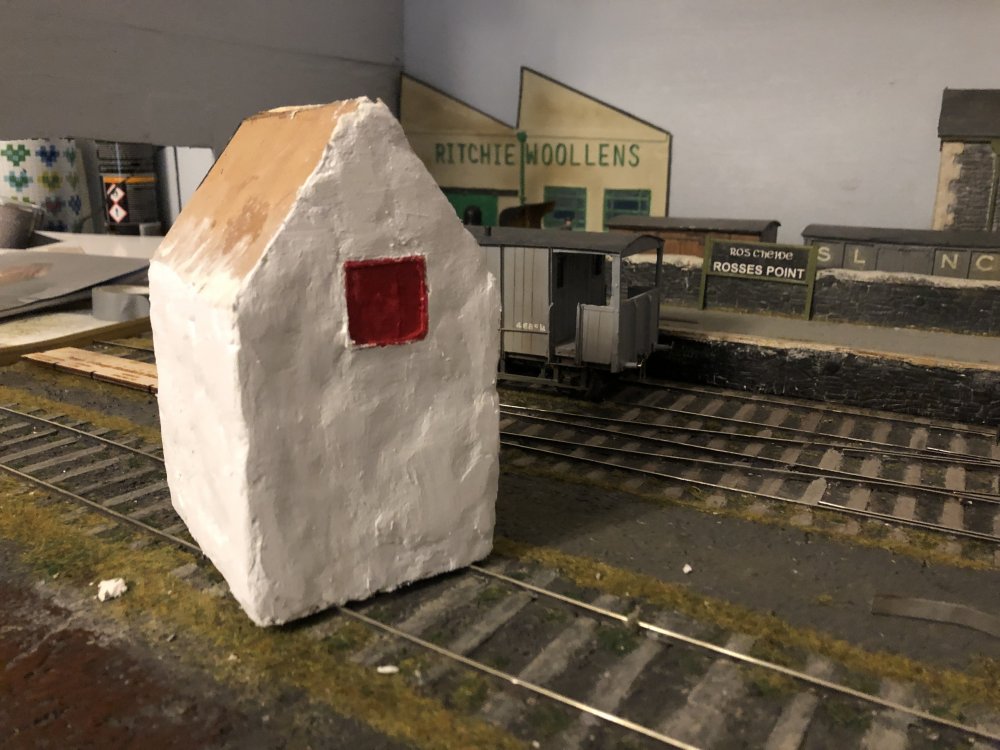
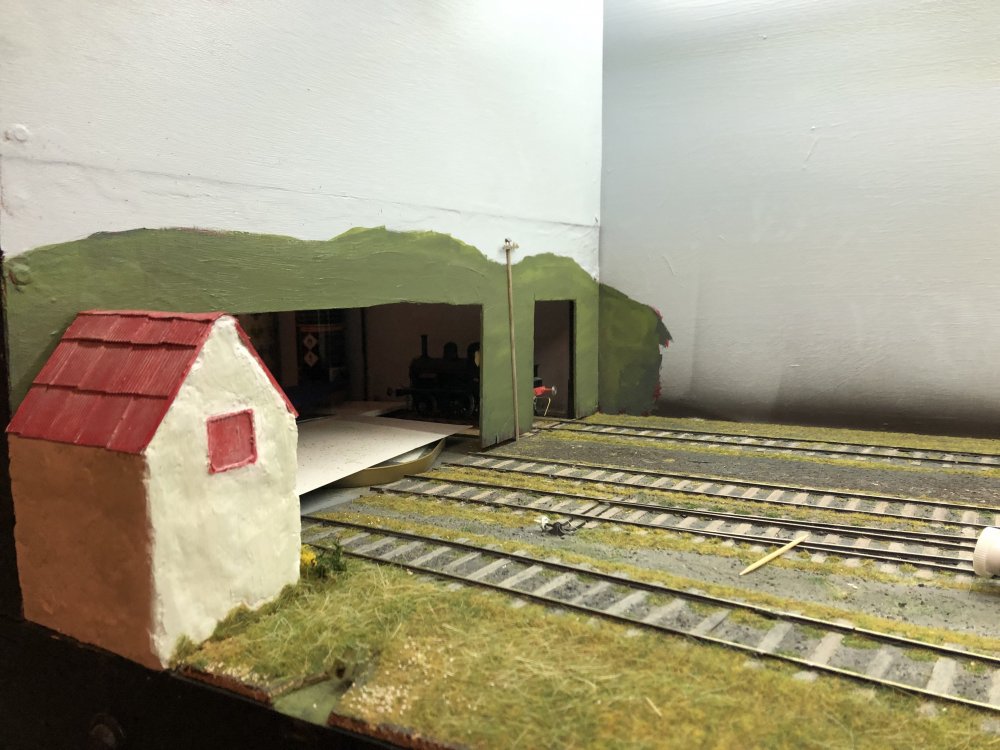
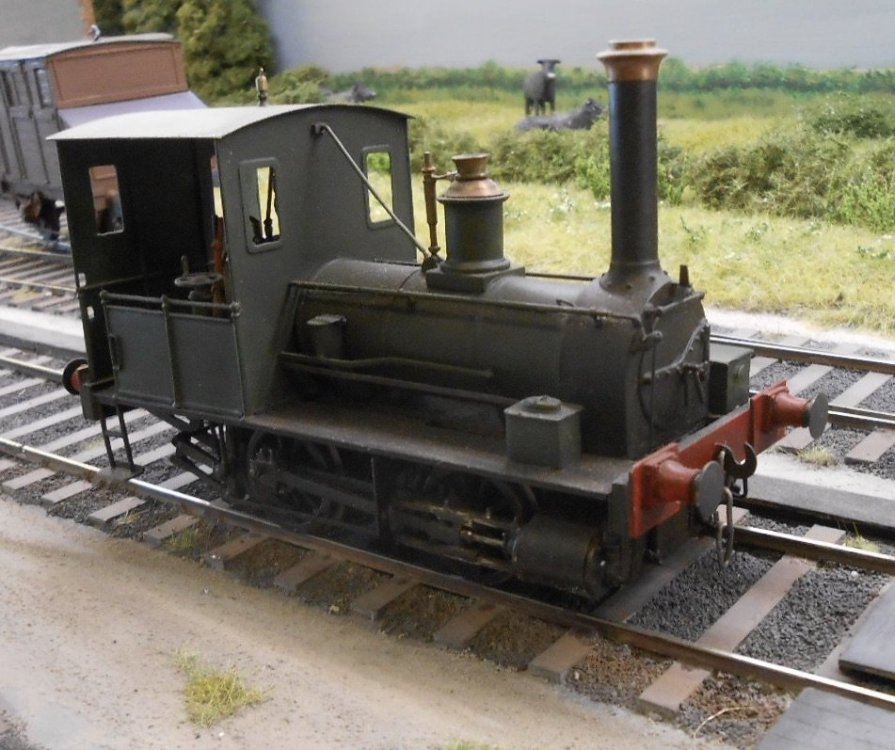
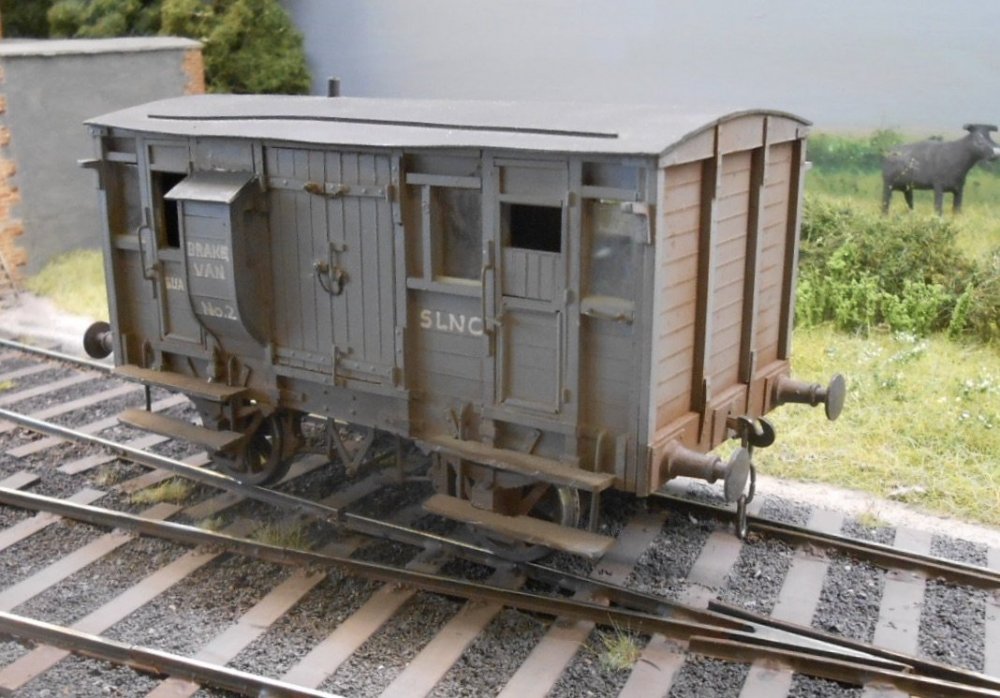
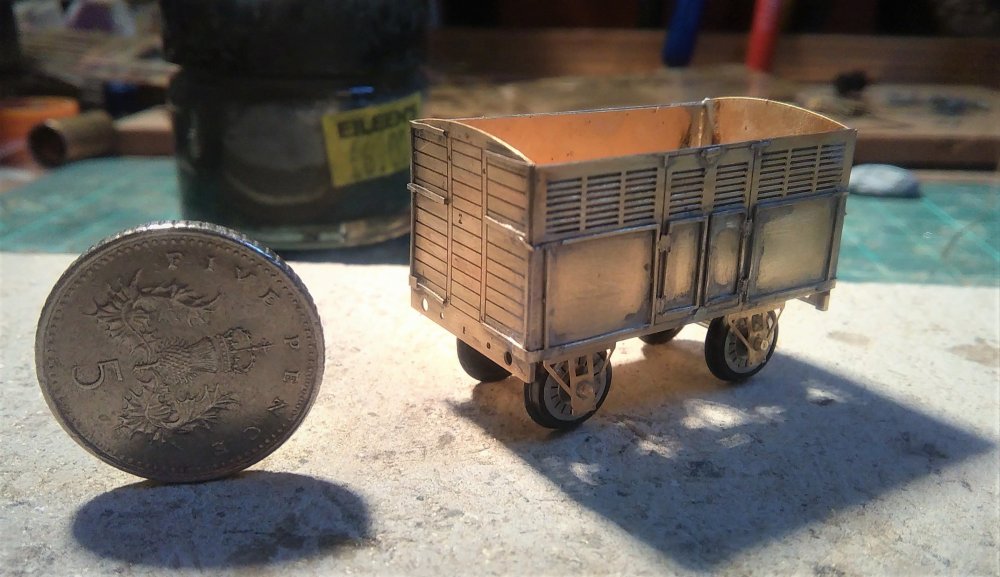
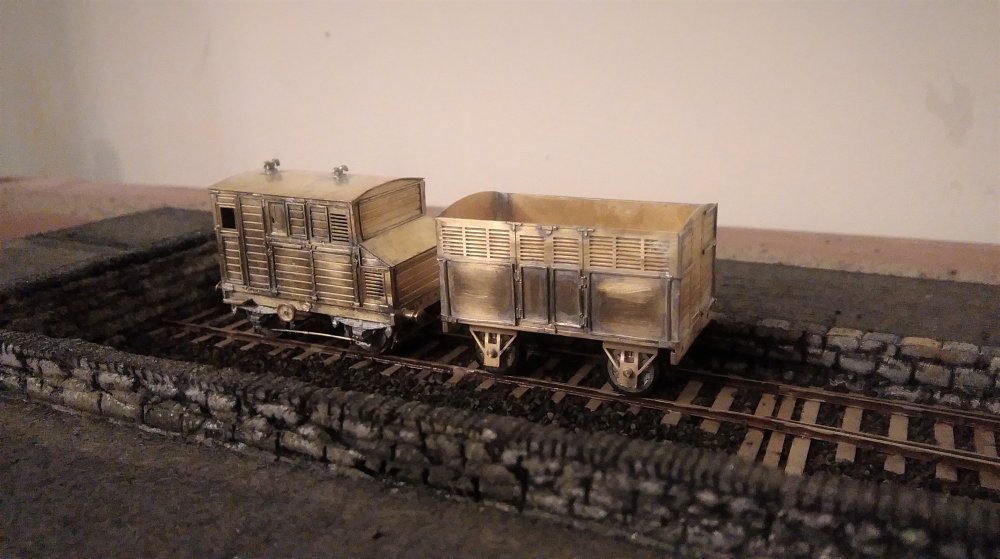
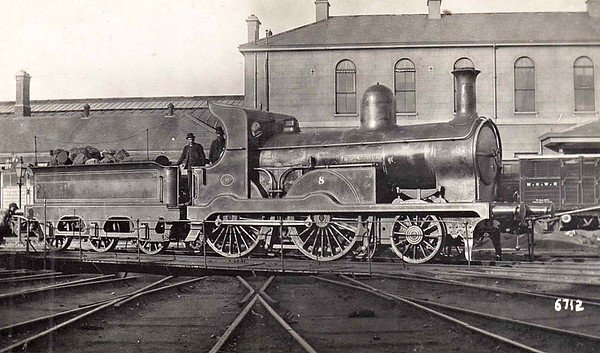
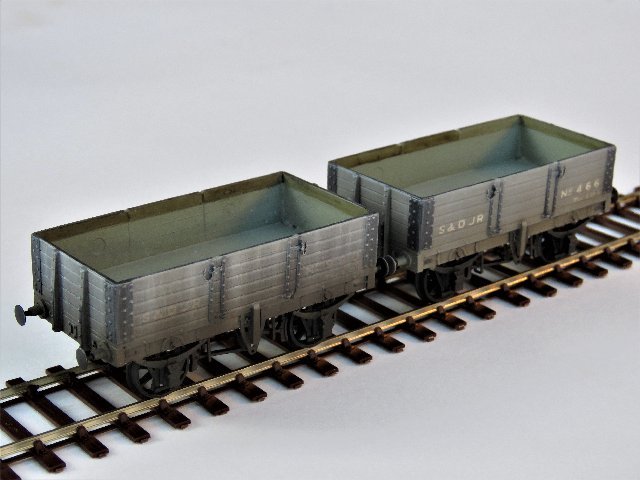
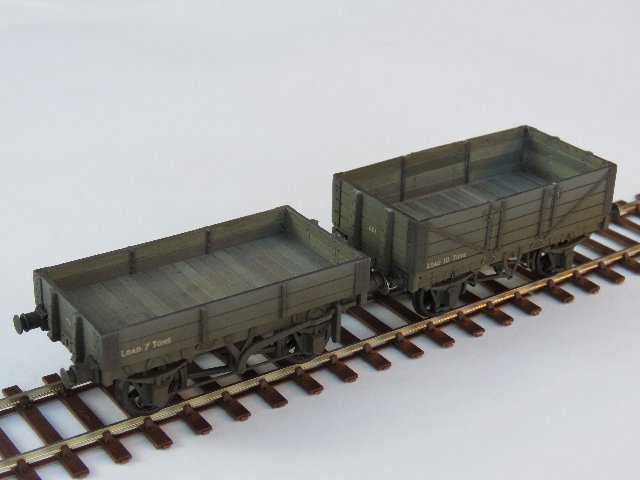
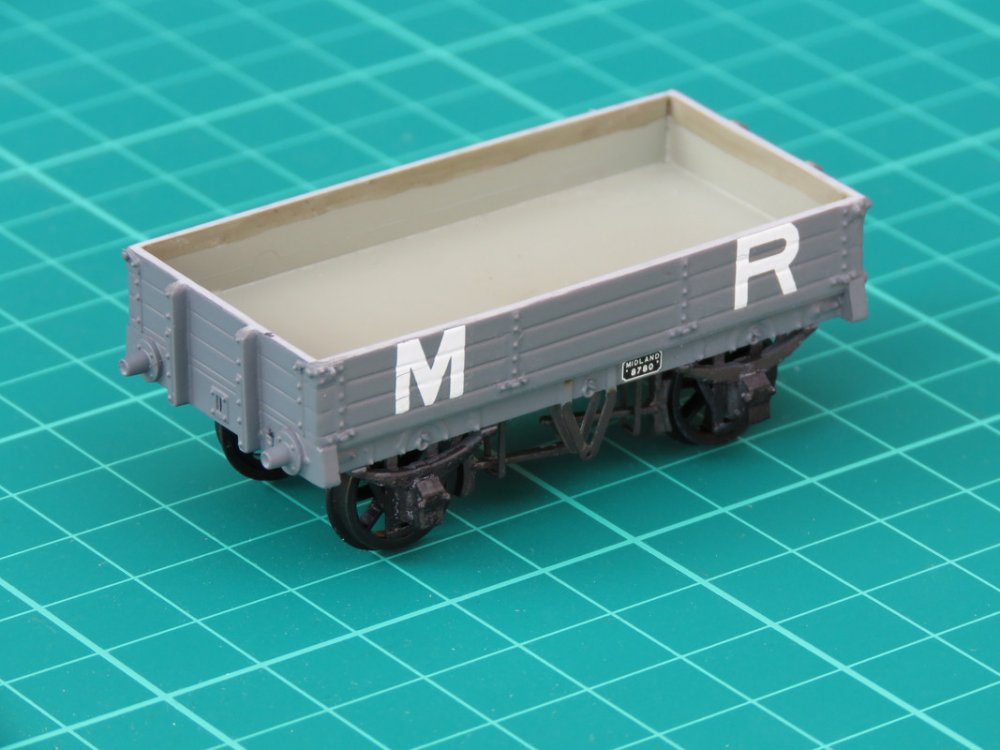
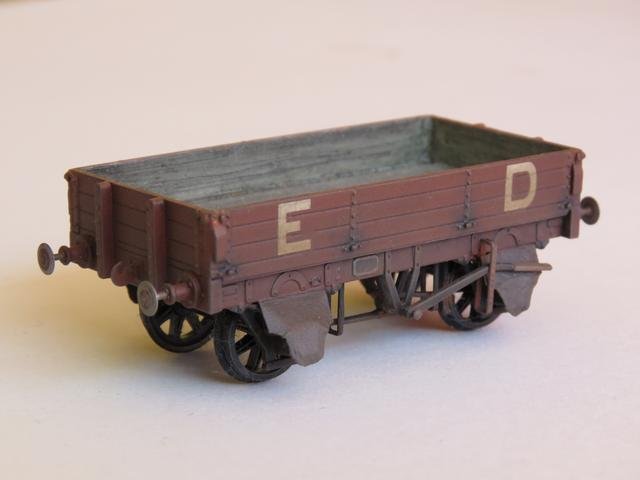
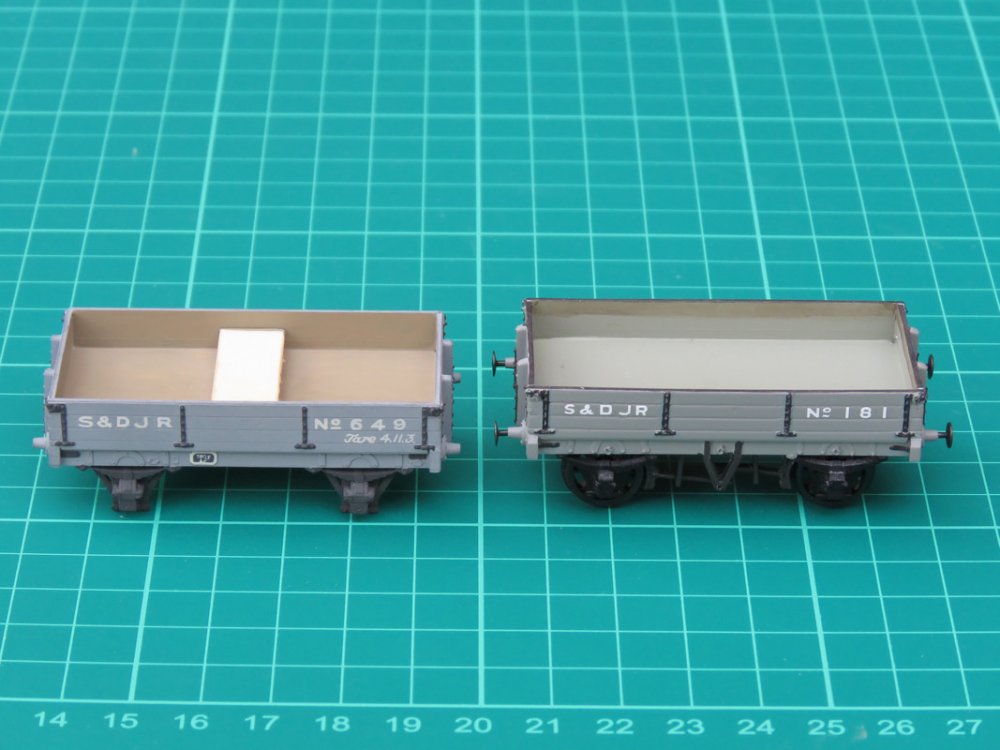
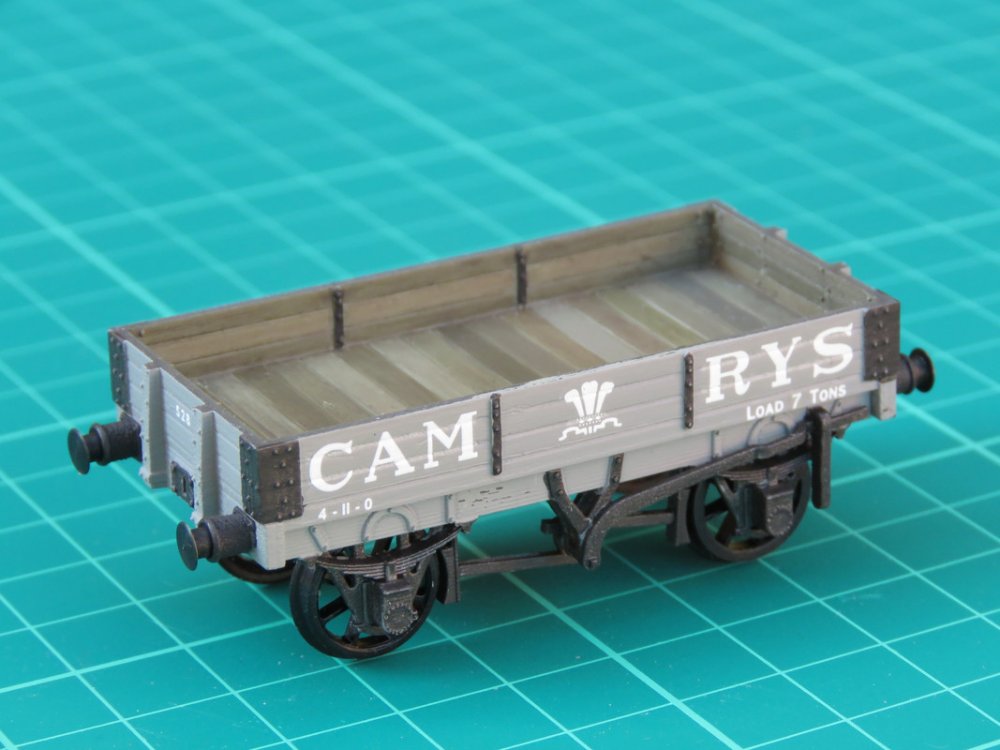
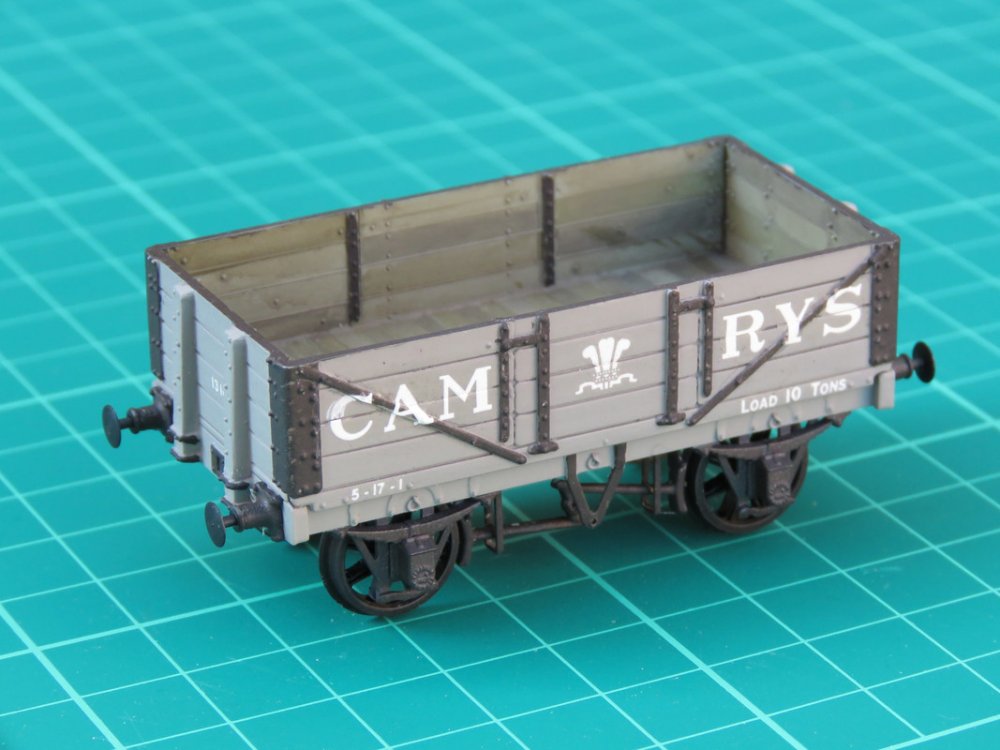
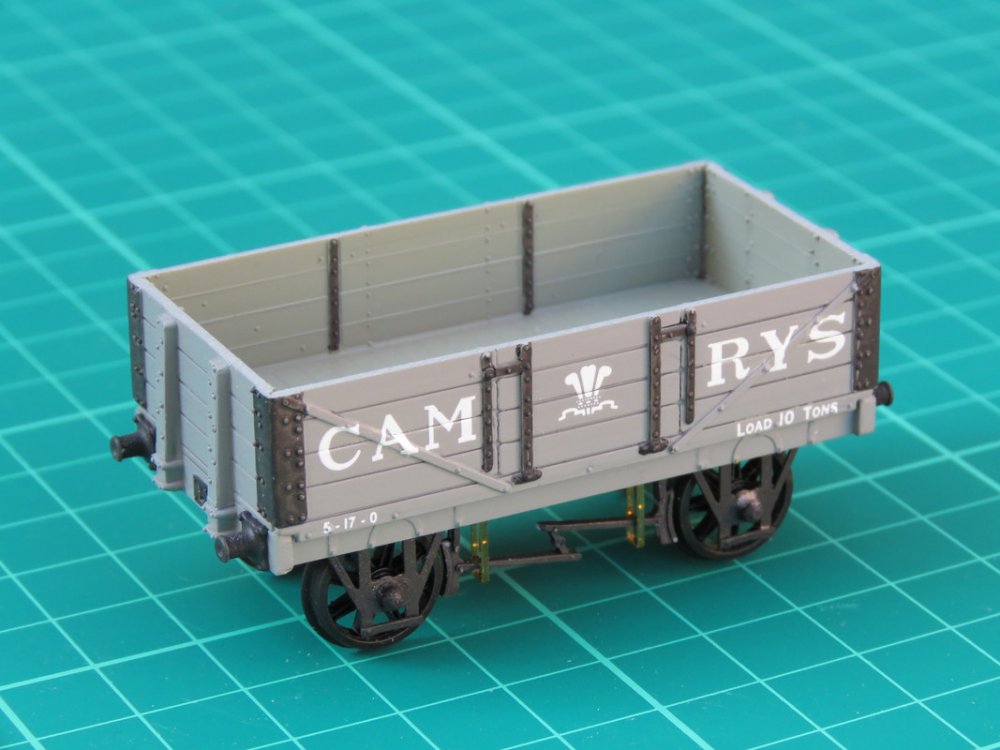
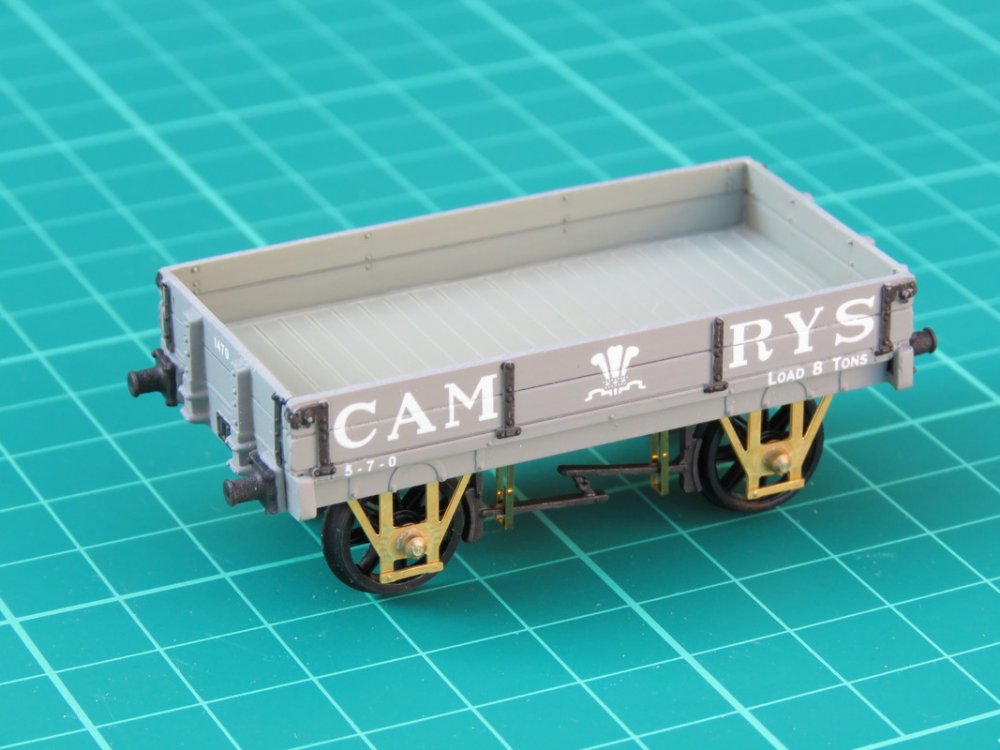
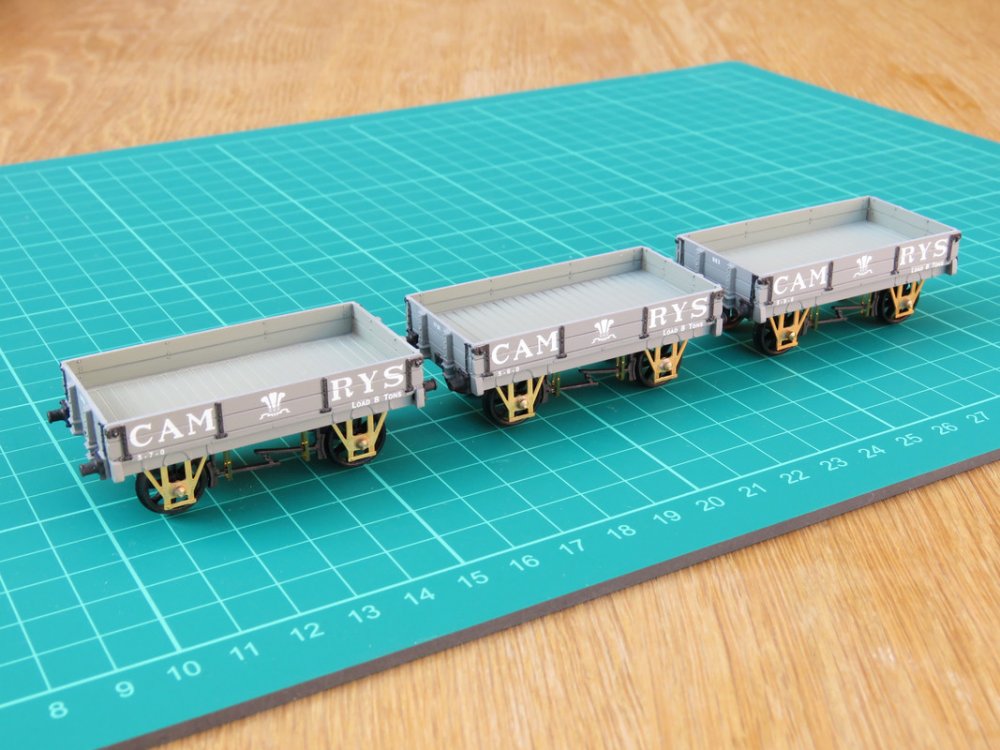
Mount Bellew, MGWR
in Irish Model Layouts
Posted
Hi Eoin,
many thanks for posting the link - the loco certainly looks the business! I'll have a thorough read through over the weekend!
Many thanks and kind regards,
Mark